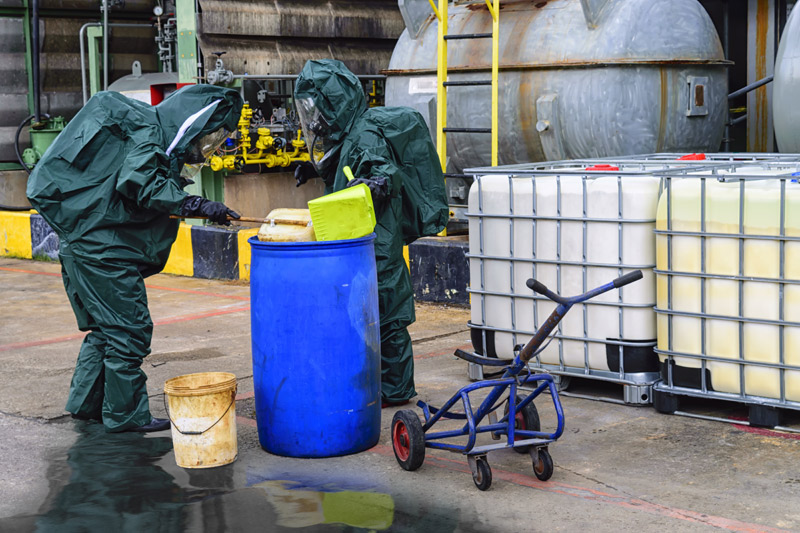When a hazardous spill or basement flood occurs, time is critical. Understanding how emergency spill response services operate can help you minimize damage, protect safety, and ensure proper cleanup. In this article, we explore the step-by-step process of these services and why choosing the right provider, like Ideal Response, is essential for effective remediation.
Table of Contents
What Are Emergency Spill Response Services?
Emergency spill response services are professional solutions designed to handle sudden hazardous material leaks, chemical spills, or environmental contamination. These services are essential for workplaces, industrial sites, and residential areas affected by emergencies such as chemical leaks, fuel spills, or a basement flood.
The goal is quick containment, proper cleanup, and prevention of further harm to people, property, and the environment.
Why Is Speed Important in Spill Response?
Speed is the most critical factor in spill emergencies. Hazardous spills can spread quickly, affecting air quality, soil, water systems, and human health. A basement flood can lead to structural damage, mold growth, and long-term property issues if not addressed immediately.
Professional spill response teams operate on 24/7 schedules to ensure rapid action. Their quick deployment is essential to limit damage and ensure compliance with environmental regulations.
How Do Emergency Spill Response Services Start?
When you contact an emergency spill response provider like Ideal Response, the process begins immediately:
- Emergency Call & Assessment
You call the service provider, reporting the incident and providing details such as location, type of spill, and severity. The response team quickly assesses the situation to determine the necessary equipment and personnel. - Rapid Deployment
Emergency teams are dispatched immediately with specialized equipment, including protective gear, containment tools, and cleaning supplies. - On-Site Evaluation
Upon arrival, technicians conduct a detailed evaluation of the spill or basement flood area to determine the source, spread, and potential hazards.
How Do Spill Response Teams Contain the Spill?
Containment is the first major step in spill cleanup. It ensures the spill does not spread further and cause additional damage.
- Chemical Spills: Teams use absorbents, barriers, and neutralizing agents to contain chemicals safely.
- Fuel or Oil Spills: Specialized booms, pads, and pumps prevent further leakage and environmental contamination.
- Basement Flood: In the case of a basement flood, responders use pumps, vacuums, and flood barriers to control water spread.
The containment process is vital to protect workers, nearby properties, and the environment.
What Does the Cleanup Process Involve?
After containment, the cleanup phase begins. This involves:
- Removal of Hazardous Material
Teams use appropriate techniques and equipment to remove the spill safely. For chemical spills, neutralizing agents and hazardous waste disposal procedures are used. For a basement flood, water is extracted using submersible pumps, wet vacuums, and dehumidifiers. - Surface Cleaning
Contaminated surfaces are cleaned with specialized detergents and disinfectants to eliminate hazardous residues and reduce health risks. - Waste Disposal
Hazardous waste is handled and disposed of according to local environmental regulations to prevent contamination. - Drying and Restoration
For incidents like a basement flood, drying equipment such as air movers and dehumidifiers restore affected areas to prevent mold and structural damage.
How Do Emergency Spill Response Services Ensure Safety?
Safety is a top priority in emergency spill response. These services follow strict protocols:
- Personal Protective Equipment (PPE): Technicians wear appropriate gear to avoid exposure.
- Safety Barriers: The site is secured to prevent public access.
- Monitoring: Air and surface quality are monitored to ensure safe conditions post-cleanup.
Ideal Response emphasizes safety as a core principle, providing trained professionals who follow industry standards to protect everyone involved.
How Do Professionals Handle a Basement Flood?
A basement flood is a common emergency that requires rapid intervention to prevent long-term damage. Emergency spill response services handle it in several steps:
- Assessment: Technicians identify the source of flooding—whether from burst pipes, sewer backups, or heavy rain.
- Water Extraction: Powerful pumps and wet vacuums remove the standing water.
- Moisture Detection: Moisture meters identify hidden damp areas to prevent mold.
- Drying: Industrial dehumidifiers and air movers dry the basement thoroughly.
- Sanitization: The area is disinfected to remove bacteria and prevent contamination.
- Restoration: Repairs such as replacing drywall or flooring are done to restore the basement to a safe condition.
What Are the Benefits of Professional Spill Response?
Using professional emergency spill response services brings several advantages:
- Rapid Response: Minimizes damage and contamination.
- Specialized Equipment: Access to advanced tools and techniques for efficient cleanup.
- Safety Compliance: Professionals follow strict safety and environmental regulations.
- Expertise: Technicians are trained to handle hazardous materials and flooding scenarios.
- Peace of Mind: Knowing professionals handle the emergency allows property owners to focus on recovery.
How to Choose the Right Emergency Spill Response Provider?
Choosing the right provider is critical for an effective cleanup. Consider:
- Availability: 24/7 emergency service is essential.
- Experience: Look for providers with a proven track record in spill and flood response.
- Certification: Ensure the team is trained and certified in hazardous material handling.
- Reputation: Reviews and testimonials reflect reliability and service quality.
- Equipment: Modern, well-maintained equipment ensures efficient cleanup.
Ideal Response stands out as a trusted provider with years of experience in handling spills and floods efficiently.
How Can You Prevent Emergencies Like Spills or Basement Floods?
While accidents can’t always be avoided, prevention steps can reduce risk:
- Regular maintenance of pipes, drains, and tanks.
- Installing sump pumps in flood-prone basements.
- Proper storage of hazardous materials in sealed containers.
- Having a spill response plan in place for businesses.
- Training staff in basic emergency procedures.
Conclusion: Why Emergency Spill Response Matters
Emergencies like hazardous spills or a basement flood can escalate quickly without professional intervention. Emergency spill response services provide fast, safe, and effective solutions to protect people, property, and the environment.
Partnering with a trusted provider like Ideal Response ensures emergencies are handled with speed, precision, and safety. Understanding how these services work empowers you to respond effectively during crises and safeguard your home or business.

